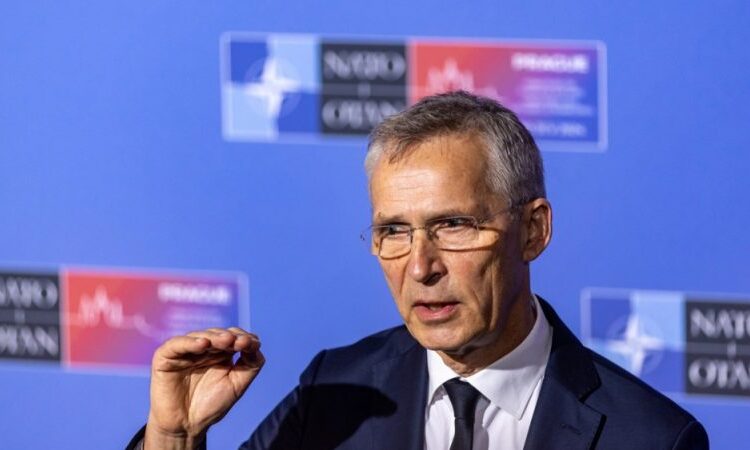
NATO Secretary General Jens Stoltenberg called on Friday (31 May) for NATO members to spend together ‘equitably’, €40 billion a year for Ukraine, giving up on his original multi-year plan, nevertheless assuring this will provide a long-term perspective for Ukraine.
He said he was “asking” all NATO members to “maintain at least” the level of €40 billion worth of military support to Ukraine “each year” for “as long as necessary”, after chairing an informal meeting of the 31 foreign ministers.
Since Russia’s illegal attack on Ukraine in 2022, NATO members together have roughly spent €40 billion a year, Stoltenberg calculated.
Repeating this commitment over the long run “will give predictability” to the Ukrainians, he said.
Stoltenberg previously proposed that members commit €100 billion for several years. One diplomat mentioned the draft proposal was expected for the next five years.
But his proposal raised many questions, notably around the amount each country needed to contribute towards the common fund.
Stoltenberg said the work on the details will now start, hoping to present a final conclusion at the 9-11Julyleaders’ summit in Washington, DC.
Talking about his revised plan Stoltenberg said the contributions would have to be made “equitably” and referenced NATO members’ GDP as “one option we can look into” for setting the contribution key.
The newly adjusted €40 billion would bring the level of commitment to a total of €200 billion over five years, which is more than the initial proposal.
However, the commitment would have to be renewed every year, as it is not funded as a multi-year plan.
It therefore risks running into the unpredictability caused by changes in governments, who are potentially less inclined to pledge large amounts of cash and military support to Ukraine, as the recent election of the Slovak president has shown, following Hungary’s stance.
Hungarian Prime minister Viktor Orban earlier this spring said his country received an ‘opt-out’ from any NATO support to Ukraine. It is unclear how this position will affect Stoltenberg’s proposal.
Support for Ukraine has also already run into political issues in the US, the largest military spender in the alliance, may see the return of NATO-spending hawk ex-president and candidate Donald Trump returning to the White House next year.
Russia, meanwhile, has spent $109 billion in 2023 on its war on Ukraine, according to the SIPRI think tank. Compared to Ukraine, which spent $64.8 billion in 2023.
Since Stoltenberg promised the funding would be “new money”.
It is however unclear if the money will be given under the NATO umbrella or the EU, where funds are set up for the same purpose. An alliance diplomat before the ministerial meeting highlighted that the cash mentioned will most likely not be new funding.
This amount totals 0.08% of the GDP of NATO countries, the Czech foreign minister, host of the meeting, said, adding it is “achievable”.
“But this means respective countries need to go to their finance ministers and have a discussion. And this is where the details of the plans are important. We have time to discuss it,” he stressed.
[Edited by Rajnish Singh]







